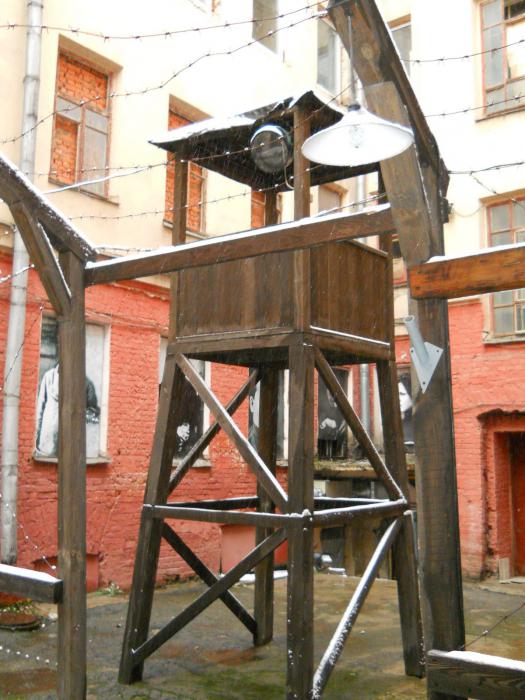The Gulag History Museum appeared in Moscow in 2001 near the Lubyanka metro station. It is located on Petrovka 16, in the old house where the Raevsky estate was once located, and later, in the 90s, a beer restaurant was located. This building had nothing to do with the Stalinist repressive machine. Initially, the museum was planned to be opened in the former NKVD firing squad along Nikolskaya Street, but the organizers did not like its close proximity to the Nautilus shopping center and Tretyakov passage.
The beginning of the history of the museum
The founder and first head of the museum was A.V. Antonov-Ovseenko, a famous historian and public figure. He was the son of a revolutionary who was shot during the period of mass Stalinist repressions. Vladimir Antonov-Ovseenko, as well as other people whose relatives were ranked among the enemies of the people, had the opportunity to personally go through the Gulag. The museum was created thanks to the Moscow organization of the repressed, which provided him with a large number of things from prisoners (there are also those that belonged to V. Antonov-Ovseenko himself).
Description of expositions
The courtyard, where the State Museum of the History of the Gulag is located, is covered with barbed wire, and behind it hang portraits of Mandelstam, Tukhachevsky, Bukharin, Meyerhold, Vavilov and other famous people who were not spared by the meat grinder of repressions. Under the windows of the building there is a sentry tower built up from wooden boards, designed to monitor the camp. Entering the house, visitors enter the recreated office of the NKVD investigator. Following him, you can go to the barracks for convicts and the punishment cell. To make the rooms more realistic, they are complemented by wax figures of investigators and prisoners. The atmosphere of these rooms allows you to feel how terrible the existence of people who became objectionable to the Soviet regime was.

The Gulag History Museum consists not only of reconstructions of individual fragments of the camp. It also has art and historical documentary exhibition halls. The first one contains works of art of people who have survived to our days and passed through the Stalinist camps. The works of contemporary artists and sculptors on the topic of the Gulag are also exhibited here. The exhibits of the second hall are personal letters and memoirs of prisoners, as well as documents directly related to the system of state administration of forced labor camps.
Working hours
About 1 thousand visitors come to the Gulag History Museum annually, the vast majority of which are tourists. The facility is open for guests from Tuesday to Sunday. The day off is Monday. The museum’s working hours are as follows: from Tuesday to Wednesday and from Friday to Sunday, it works from 11:00 to 19:00. On Thursday - from 12:00 to 20:00. The cash desk always closes 1 hour earlier than the showrooms. On the last Friday of each month, the museum does not serve visitors in connection with the sanitary day. For group tours should be pre-recorded.
Gulag Museum: prices, reviews
In order to get to the museum, visitors need to purchase entrance tickets. Their cost varies from 50 to 200 rubles. For children under 7 years of age, orphans, pupils of orphanages, university students of stationary forms of education, disabled people of groups I and II, participants of the Second World War, victims of repression and some other categories of citizens, admission is free. The third Sunday of every month the museum serves all its guests absolutely free of charge. Visitors are allowed to use cameras and camcorders.
People who have visited the museum note that being in it is psychologically difficult. Everything in the exhibition halls speaks of the hard life of prisoners who were not spared by the communist government. Documentary materials, fragments of the furnishings of the barracks and the isolation ward perfectly convey the atmosphere in which people were kept. Paintings and sculptures successfully complement the museum’s surroundings and allow even deeper delving into the problem of studying the history of the Gulag.
Virtual Museum of the Gulag
On the Internet today there is a Virtual Gulag Museum. It was created by the St. Petersburg Scientific and Information Center Memorial in collaboration with Alt-Soft CJSC. The site contains many photographs of the Stalin era, located in various museum collections across the country. Also in his database there is evidence of the life of the Gulag, which cannot be seen in the exhibition halls. These include images of camp buildings, preserved, half-preserved and long-disappeared burials of convicts, monuments and memorial plaques dedicated to the memory of victims of totalitarianism. The site was founded with the aim of creating a unified national museum on the Russian expanses dedicated to the Gulag, which contains all the materials existing today about this terrible period of Russian history.
Other places of memory of the repressed in Lubyanka
It was not in vain that the Gulag History Museum was opened in the capital of the Russian Federation. Moscow was the main city of the USSR. It was here that the fate of millions of people came to be. Not only the museum keeps in itself the memory of political repression. Not far from it is the former KGB building, behind the gray walls of which decisions were made on punitive measures for citizens who were objectionable to the Soviet regime. Here, on Lubyanka, you can approach the Solovetsky stone and honor the memory of those who became victims of the totalitarian machine.